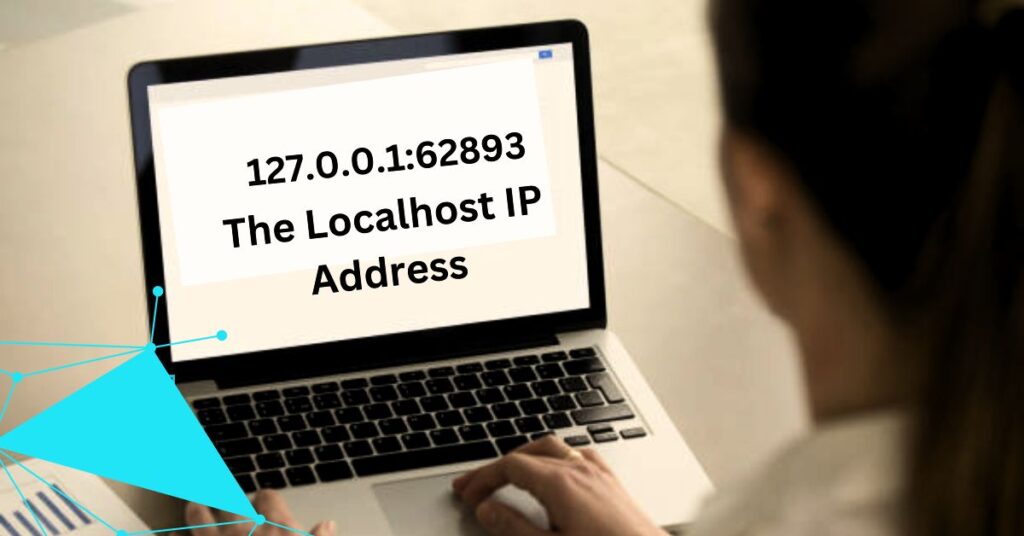In the realm of IT and networking, the combination of 127.0.0.1:62893 is significant, particularly for local testing and development. This guide explores the roles and functionalities of this IP address and port number, offering a detailed understanding of their importance and common issues associated with them.
What is 127.0.0.1:62893?
The address 127.0.0.1 is commonly known as the loopback address or localhost. It is a special IP address designated for a computer to refer to itself. This address, part of the IPv4 standard, is used for loopback testing, enabling a device to communicate internally without interacting with external networks. Essentially, when data is sent to 127.0.0.1, it remains within the same device, allowing for local communication and testing.
The port number 62893 is used in conjunction with this IP address. Port numbers are numerical identifiers that help distinguish between different services and applications running on a device. Ports range from 0 to 65535, with certain ranges reserved for specific protocols and services. High-numbered ports, such as 62893, are often utilized for temporary or ephemeral purposes, allowing applications to use them as needed.
Related Blog” Navigating Localhost Access: Exploring 127.0.0.1:49342
Importance of the Loopback Address
The loopback address plays a crucial role in various diagnostic and testing scenarios. For developers and network administrators, it provides a way to test software and network services without having to send data across the external network. This localized testing is invaluable for identifying and resolving issues before deploying applications to a live environment.
Using the loopback address for testing ensures that any problems can be addressed within the local machine, without the risk of external network issues affecting the results. This not only helps in creating more reliable applications but also in diagnosing problems with network services in a controlled setting.
Role of Port Numbers
Ports are essential in networking as they help differentiate between various services and applications on a device. Each port is associated with a specific process or service, allowing multiple applications to run concurrently without interfering with each other. This distinction is vital for ensuring that traffic is directed to the correct service or application.
Port numbers play a significant role in maintaining organized and efficient network communication. By assigning unique ports to different services, a device can handle multiple types of traffic simultaneously. This is crucial for applications that need to operate without interruption or conflict, such as web servers, email servers, and database services.
Understanding Port 62893
Port 62893 is often used for ephemeral or temporary purposes. Ephemeral ports are not assigned to specific services by default but are allocated dynamically by applications for short-term use. This flexibility allows applications to establish network connections without being constrained by predefined port assignments.
When a program needs to initiate a network connection, it can select an available port from this high-numbered range. This dynamic allocation helps in avoiding conflicts with standard service ports and facilitates smoother network operations. For instance, a web server or database connection might temporarily use port 62893 during testing or troubleshooting processes.
Common Uses of Port 62893
Port 62893 may be employed by various applications for temporary data exchange or communication. This could include web servers, database connections, or other networked services. Developers and system administrators often use this port during testing or troubleshooting to avoid potential conflicts with standard service ports.
In practical scenarios, port 62893 could be utilized for tasks such as testing local web servers by directing traffic to this address and port, or checking local database connections. This flexibility makes port 62893 a valuable tool for ensuring that applications and services function correctly before they are deployed in a live environment.
Loopback Testing with 127.0.0.1:62893
Testing network services using 127.0.0.1:62893 offers several advantages. By directing traffic to this loopback address and port, developers can verify that their applications can handle network communication effectively without being influenced by external network issues. This localized testing is particularly useful for creating stable and reliable applications.

The process of loopback testing involves sending data to the loopback address and port and analyzing how the application handles this data. This method helps in identifying potential issues and ensuring that the application performs as expected under controlled conditions. As a result, developers can address any problems before making their applications available to users.
Security Implications
Using 127.0.0.1 provides a layer of security during testing and development. Since data sent to this address remains within the local device, it is less susceptible to interception or tampering by external entities. This ensures that sensitive information or test data does not leave the machine, reducing the risk of security breaches.
Despite this inherent security, developers must still ensure that their applications handle all network communication securely. Proper handling of local addresses and ports is essential to maintaining overall security, even when operating within a controlled environment.
Troubleshooting Common Issues
When working with 127.0.0.1 and port 62893, several common issues may arise. Understanding these potential problems and knowing how to troubleshoot them can save time and effort during development and testing.
Port conflicts can occur when multiple applications attempt to use the same port simultaneously. This can result in errors and prevent applications from functioning correctly. To avoid port conflicts, developers should ensure that each application uses a unique port or configure their applications to handle port sharing appropriately.
Firewall restrictions can also impact the functionality of port 62893. Firewalls may block traffic to specific ports, including 62893, which can prevent applications from communicating as intended. Developers should review firewall settings and configure rules to allow necessary traffic while maintaining security.
Misconfigurations in network settings or application configurations can lead to connectivity issues. It is crucial to ensure that all settings are correct and that applications are properly configured to use 127.0.0.1 and port 62893 for smooth operation.
Practical Applications
The use of 127.0.0.1:62893 can be observed in various practical scenarios. For instance, web developers might test their local web servers by directing traffic to this address and port. Similarly, database administrators could use it to test local database connections. This flexibility makes 127.0.0.1 and port 62893 valuable tools in many technical fields.
By utilizing this loopback address and port number, professionals can conduct thorough testing and troubleshooting without affecting live environments. This approach enhances the development process and contributes to the creation of robust and reliable systems.
Conclusion
The IP address 127.0.0.1:62893 is a fundamental component in the realm of networking and IT. It facilitates local testing, development, and troubleshooting, providing a secure and efficient way to ensure that applications and services function correctly. Understanding the roles and potential issues associated with 127.0.0.1 and port 62893 can greatly enhance a developer’s or network administrator’s ability to create stable and reliable systems.
By leveraging the loopback address and high-numbered ports, professionals can conduct effective testing and troubleshooting, paving the way for successful application deployment and operation.
Hey, Molar is the voice behind this all-encompassing blog, sharing expert insights and practical advice on business, real estate, and more. Dedicated to helping you navigate the complexities of these fields, Kelly provides the latest trends, in-depth analyses, and creative strategies to elevate your ventures.
